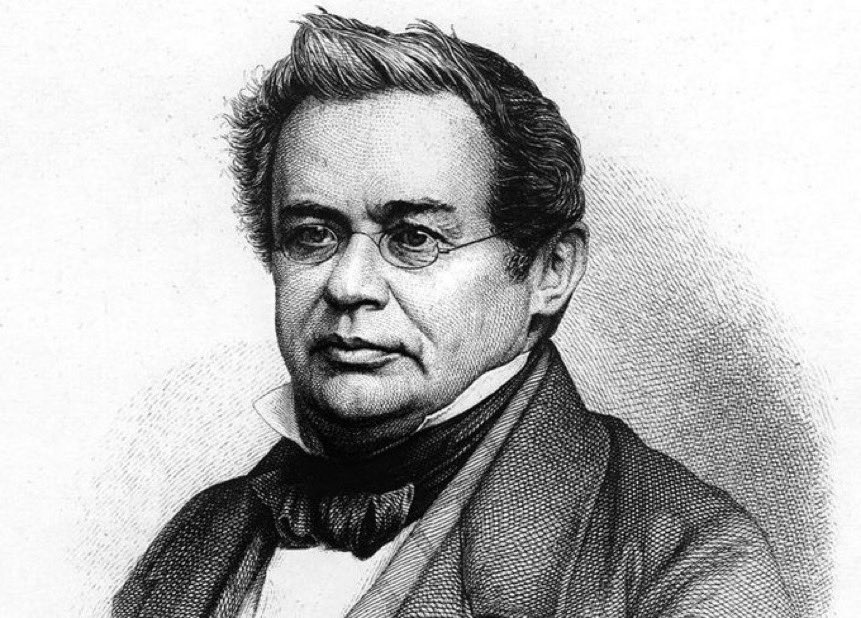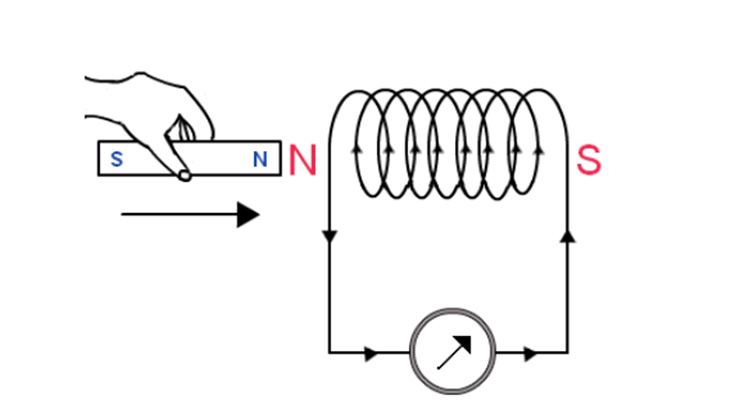Lenz’s law is a very important law related to Michael faraday’s laws of electromagnetic induction. Faraday’s Laws of Electromagnetic Induction consists of two laws.
- The first law describes the induction of EMF in a conductor and
- The second law quantifies the EMF produced in the conductor, meaning, the second law gives the mathematical description of the first law.
Apart from this, the usefulness of Lenz’s law can not be ignored. Faraday’s laws describe and quantify the induced EMF in the coil, but Lenz’s law tells about the direction of induced EMF in the coil.
In this present article, we will discuss Lenz’s law – statement, formula, applications, and experiments. So let’s get started…
What is Lenz’s law?

In the year 1884, Emil Lenz, the physicist who formulated Lenz’s law, states that the direction of a current induced in a conductor by a changing magnetic field is such that the magnetic field produced by the induced current cancels the change in the original magnetic field.
Lenz’s law statement: Lenz’s law states that the direction of a current induced in a conductor by a changing magnetic field is such that the magnetic field produced by the induced current opposes the change in the original magnetic field.
This is a qualitative law that determines the direction of an induced current, but it says nothing about its magnitude. Lenz’s law guesses the direction of many effects in electromagnetics, such as the direction of a voltage induced in an inductor or wire loop by a changing current or the drag of an eddy current on an object moving in a magnetic field. Lenz’s law can be considered similar to Newton’s third law in classical mechanics and Le Chatelier’s principle in chemistry.
Read Also
- Faraday and henry’s experiments on electromagnetic induction
- Faraday’s laws of electromagnetic induction Class 12
Lenz’s law formula
Actually, Lenz’s Law has no formula. The formula for Lenz’s law is just the reflection of the formula of Faraday’s law. Lenz’s law just put the negative sign in the formula of faraday’s law. See the below formula, here negative sign is contributed by Lenz’s law.
Where, ${\mathcal {E}}$ is the induced EMF, $N$ is the number of turns in the coil, $\Delta\phi$ is the change in the magnetic flux, and $\Delta t$ is the change in time.
Lenz’s Law Applications
There are many applications of Lenz’s law. Some of them are given below-
- Eddy current balances
- Metal detectors
- Eddy current dynamometers
- Braking systems on train
- AC generators
- Card readers
- Microphones
Lenz’s Law Experiments
To find the direction of induced EMF, we refer to Lenz’s law, but Emil Lenz performs some experiments to arrive at its final statement.
First Experiment
In the first experiment, he observed that when the current flows in the coil, the magnetic field lines are produced. As the current flow through the coil increases, the magnetic flux will increases. Then the direction of the flow of induced current would be such that it opposes the increase in magnetic flux.
Second Experiment
In the second experiment, he observed that when the current-carrying coil is wound on an iron rod, the left end of which behaves as the N pole and is moved towards the S coil, an induced current is produced.
Third Experiment
In the third experiment, he observed that when the coil is pulled towards the magnetic flux, the area of the coil linked with this magnetic flux decreases. According to Lenz’s law, the motion of the coil is opposed when the induced current is applied in the same direction. To produce the current, force is exerted by the magnet in the loop. To oppose the change, the current on the magnet must exert a force on the magnet.
Illustration of Lenz’s law
In this sub-title, we will illustrate Lenz’s law and will see how Lenz’s law works.
When the north pole of the bar magnet is moved towards the closed coil

When the north pole of a bar magnet is moved towards the closed coil, the induced current in the closed coil flows in the anti-clockwise direction, as seen from the magnet side closely.
The face of the coil towards the magnet developed the north polarity and thus it opposes the motion of the north pole of the magnet towards the coil which is the cause of the induced current in the coil.
In other words, the motion of the magnet towards the coil increases the magnetic flux through the coil. The induced current generates the flux in opposite direction, and hence opposes the towards motion and reduces this flux.
When the north pole of the bar magnet is moved away from the closed coil
When the north pole of the bar magnet is moved away from the closed coil, the induced current in the coil flows clockwise, as seen from the magnet side.
The face of the coil towards the magnet developed the south polarity and thus it attracts the north pole of the magnet towards the coil i.e the motion of the magnet away from the coil is opposed, which is the actual cause of the induced current in the coil.
In other words, the motion of the magnet decreases the flux through the coil. The induced current generates flux in the same direction and hence opposes the away motion and increases this flux.
Lenz’s law and the law of conservation of energy
Lenz’s law obeys the law of conservation of energy. The law of conservation of energy says that the energy can neither be created nor destroyed, only can change from one form to another. Lenz’s law states that the direction of the current in the coil is such that it opposes the change in magnetic flux. Therefore, some additional work is required to neutralize these opposing forces.
This extra work leads to periodic changes in the magnetic flux, which induces more current. Additional work that is required to neutralize opposing forces converted into electrical energy, which is nothing more than the law of conservation of energy. The magnetic flux increases as the north pole of the magnet approach the coil and decrease as it moves away from it.
In the first scene, the cause must be counteracted by moving the magnet and giving the side facing the coil north polarity. The north pole of the magnet and the north pole of the coil repel each other. To counteract the repulsive force, a mechanical action must be taken to pull the magnet towards the coil.
This mechanical energy is converted into electrical energy. This electrical energy is converted into thermal energy by the Joule effect. When the magnet moves away from the coil, the next side of the coil gets south polarity. In this case, the generated EMF counteracts the outward movement of the magnet. To resist the attraction between the north pole of the magnet and the south pole of the coil, mechanical work has to be done again.
This work is converted into electrical energy. When the magnet is not moving, no mechanical work is being done, so no EMF is induced in the coil. As a result, Lenz’s law is compatible with the law of conservation of energy.
Read Also
- Electromagnetic induction | definition, applications, and history
- Magnetic flux – definition, formula, units, and dimensions
Frequently Asked Questions – FAQs
What is Lenz’s law in simple terms?
Lenz’s law states that the direction of the current in the coil is such that it opposes the change in magnetic flux.
Where is Lenz’s law used?
Lenz’s law has a wide range of applications. It is used in electromagnetic brakes, metal detectors, and balancing eddy currents, and it is helpful in understanding the stored magnetic energy in inductors.
How is Lenz’s law compatible with the law of conservation of energy?
Lenz’s law obeys the law of conservation of energy. The law of conservation of energy says that the energy can neither be created nor destroyed, only can change from one form to another. Lenz’s law states that the direction of the current in the coil is such that it opposes the change in magnetic flux. Therefore, some additional work is required to neutralize these opposing forces.
This extra work leads to periodic changes in the magnetic flux, which induces more current. Additional work that is required to neutralize opposing forces converted into electrical energy, which is nothing more than the law of conservation of energy.
What is the difference between Lenz’s law and Faraday’s law?
Faraday’s laws describe and quantify the induced EMF in the coil, but Lenz’s law tells about the direction of induced EMF in the coil.
What does the negative sign indicate in Lenz’s law?
The negative sign in Lenz’s law indicates that the induced emf in the coil is in the opposite direction of the magnetic flux, which is linked with the coil.
Stay tuned with Laws Of Nature for more useful and interesting content

